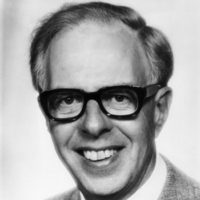
Inge G. Edler
University Hospital of Lund

C. Hellmuth Hertz
Lund Institute of Technology
For pioneering the development of ultrasound technology in medicine.
Inge Edler
From the concept of ultrasound, and its echo principle—whereby sound waves are reflected back from their point of contact with an object—Dr. Edler, in collaboration with Professor Hellmuth Hertz, developed the echocardiograph. This has made possible the acquisition of important information about the heart, not otherwise available without resorting to invasive procedures.
For example, echocardiography today can be used to distinguish the difference between fluid outside the heart and cardiac enlargement; to diagnose various disorders of the mitral valve, both acquired and congenital; and to diagnose cardiac tumors, asymmetric septal hypertrophy—an acquired disease formerly confused with aortic valvular stenosis—and congenital cardiac abnormalities in children. Cardiac motion, output, and muscle thickness can also be determined by echocardiography.
Dr. Edler’s successful use of this technique in the heart stimulated its application to other fields, such as obstetrics and gynecology; and to the study of the structure of the liver, kidneys, and other abdominal organs. As a result, the echo principle is now being routinely used to identify tumors within the abdomen, and to image abdominal aneurysms.
To Dr. Edler, the cardiologist who became the father of echocardiography, and who took a principle from one discipline—acoustical science—and translated it into medical benefits for victims of heart and many other diseases, this 1977 Albert Lasker Clinical Medical Research Award is given.
C. Hellmuth Hertz
Dr. Hertz, a biophysicist, was responsible for most of the basic technology of the ultrasonic echo method in cardiology, neurology, and to some extent, even in gynecology. He collaborated at the University of Lund with Dr. Inge Edler, who at that time was exploring the possibility of applying this technique to the investigation of heart disease.
The use of ultrasound in medical diagnosis involves directing high frequency sound waves at an organ. These sound waves are reflected, or echoed, from the tissue interfaces of the organ. The time of travel by the sound waves to the target and back is measured. Today’s sophisticated instruments provide a multidimensional, detailed analysis of these returning echoes and hence of the organ under study.
This non-invasive ultrasound technology has proved to be valuable not only in cardiology, but in other areas of the body as well—including the pelvis, abdomen, brain, eye, blood vessels, and even an embryo within the mother’s body.
To Dr. Hertz, who brought his extraordinary technical knowledge and imagination from the field of physics to diagnostic medicine, and laid the foundation on which many of today’s ultrasound advances have been built, this 1977 Albert Lasker Clinical Medical Research Award is given.
